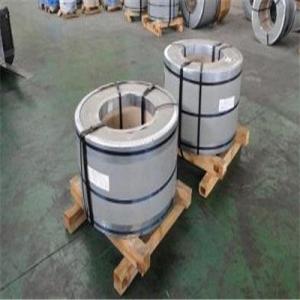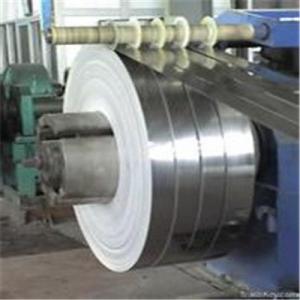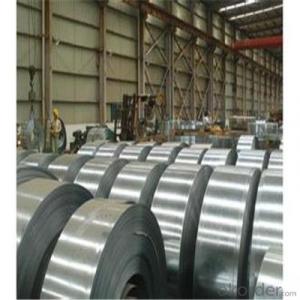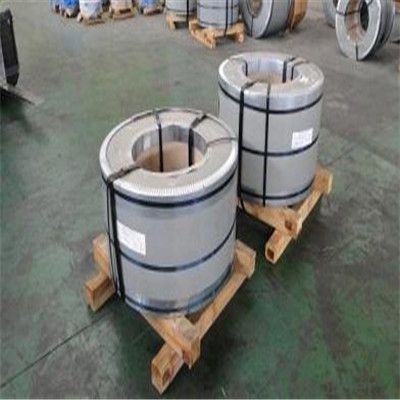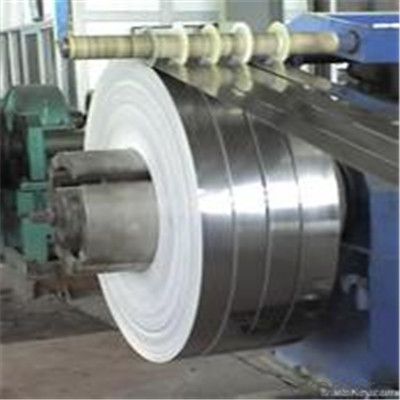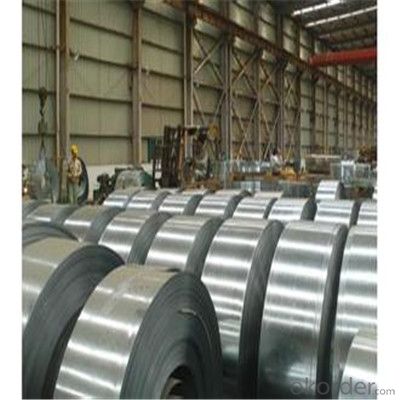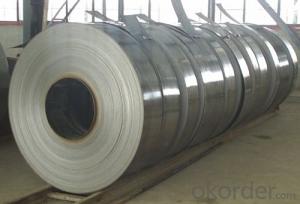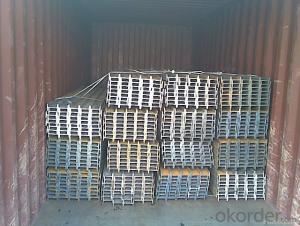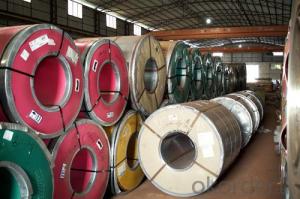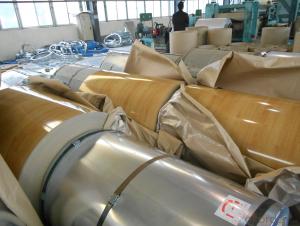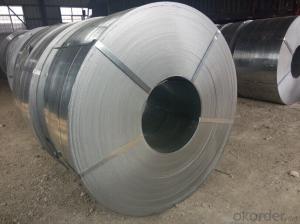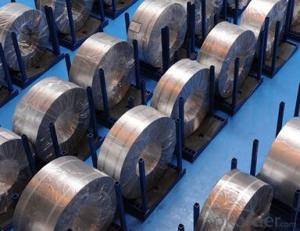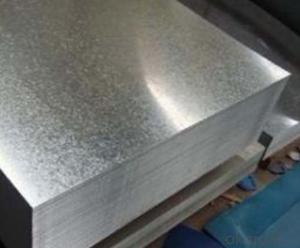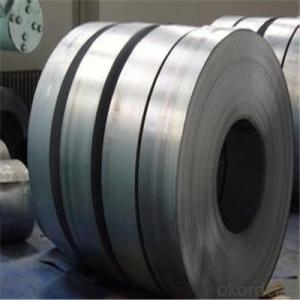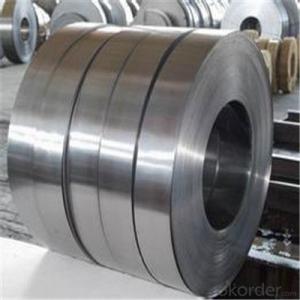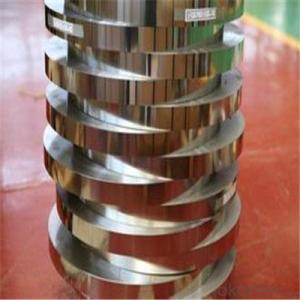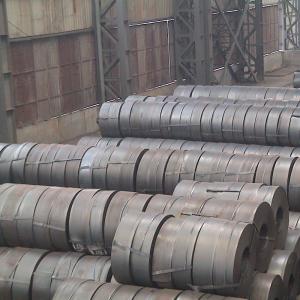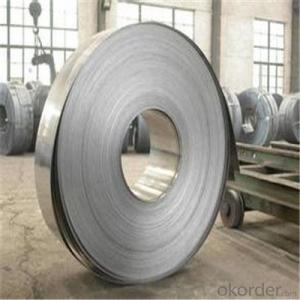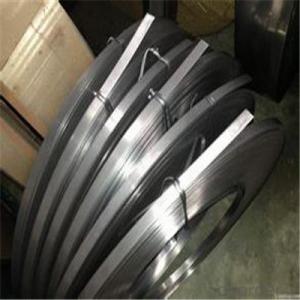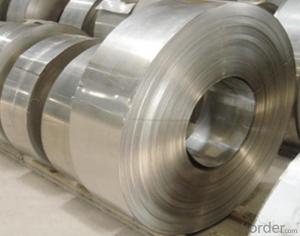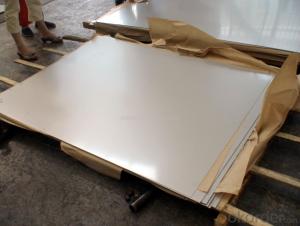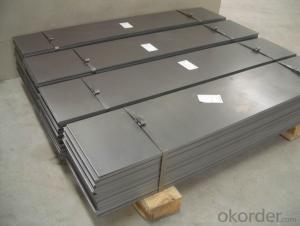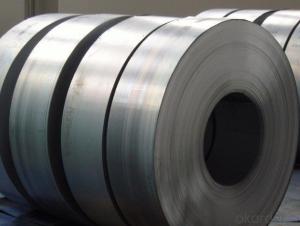Steel Strip Coils Q195 Q235 Professional Manufacturer in China
- Loading Port:
- Shanghai
- Payment Terms:
- TT OR LC
- Min Order Qty:
- 44 m.t.
- Supply Capability:
- 4433222 m.t./month
OKorder Service Pledge
OKorder Financial Service
You Might Also Like
Specification
Applications of Steel Strip Coils:
1:Chemical industry equipment, Industrial tanks
2:Medical Instruments,Tableware, Kitchen utensil,kitchen ware
3:Architectural purpose, Milk & Food processing facilities
4:Hospital Equipment, interior Exterior decoration for building
5:Architectural purposes, escalators, kitchen ware,vehicles
Festures of Steel Strip Coils:
1. Each coil is closely covered by oil paper or plastic film.
2. Outside it is firmly packed with sack cloth or compound paper.
3. Steel strap or PP strap to pack the outside to ensure safety.
Specifications of Steel Strip Coils:
| Description | Hot Rolled Steel Strip |
| Brand | Tianjin Metallurgical No.Steel Group |
| Specification | 1.2-6.0mm*70mm |
| Standard | AISI,ASTM,BS,DIN,GB,JIS |
| Material | Q195,Q215,Q215B,Q235,Q235B |
| Application | Widly used in welding steel pipes, and bicycle making etc. |
| Certificates | BV,SGS,ISO etc. |
| MOQ | 20 tons or according to customers’ requirement. |
| Port of Delivery | Tianjin Port of China |
| Remarks | We can provide qualify goods,competitive price and speedy delivery |
Images of Steel Strip Coils:
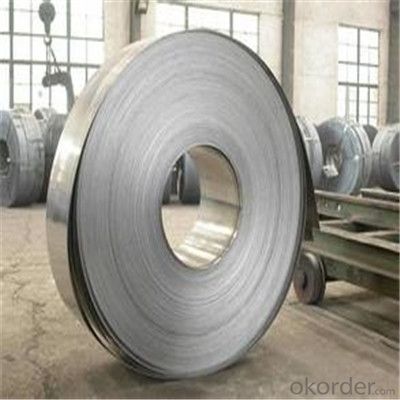
FAQ
1.What's your MOQ?
25MT, it is for one container.
2.Do you have QC teams?
Yeah, sure, our QC team is very important, they will keep the quality control for our products.
3. What's your normal delivery time?
Our delivery time about 10-20days for standard sizes, if you have other requirements like hardness and width ,it is about 20-40days.
- Q: Are steel strips commonly used in the manufacturing of appliances?
- Yes, steel strips are commonly used in the manufacturing of appliances. Steel strips provide strength, durability, and resistance to corrosion, making them ideal for various components and structures within appliances.
- Q: What is the thermal expansion coefficient of a steel strip?
- The steel strip's thermal expansion coefficient pertains to its expansion or contraction when subjected to temperature changes. This coefficient measures the strip's linear expansion per unit length for each degree Celsius change in temperature. The specific thermal expansion coefficient of a steel strip can differ based on the type of steel utilized. This discrepancy arises from variations in chemical compositions and crystal structures that impact the steel's thermal expansion properties. As a general rule, most common steel alloys exhibit a thermal expansion coefficient ranging from approximately 10 to 15 parts per million per degree Celsius (ppm/°C). Consequently, a steel strip with a thermal expansion coefficient of 10 ppm/°C would expand by roughly 0.001% of its original length for each degree Celsius increase in temperature. It is crucial to acknowledge that these values are estimates and subject to variation based on the specific alloy and other factors.
- Q: Are steel strips suitable for high-precision applications?
- Yes, steel strips are suitable for high-precision applications due to their excellent dimensional stability, strength, and durability. Steel strips can be manufactured to very tight tolerances, ensuring precise and accurate measurements. Additionally, they offer high resistance to deformation and wear, making them ideal for applications that require precision, such as automotive components, precision instruments, and electrical devices.
- Q: How are steel strips used in the production of automotive suspension components?
- Steel strips are used in the production of automotive suspension components as they provide the necessary strength and flexibility required for these crucial parts. These strips are commonly used to manufacture coil springs, which play a vital role in supporting the weight of the vehicle and absorbing shocks from the road. Steel strips are also utilized in the production of leaf springs, which help to distribute the load evenly across the suspension system and provide stability. Overall, steel strips are a fundamental component in the manufacturing process of automotive suspension components due to their durability and ability to withstand the demanding conditions of the road.
- Q: What are the different methods of heat treatment for steel strips?
- Some of the different methods of heat treatment for steel strips include annealing, quenching, tempering, and normalizing.
- Q: How are steel strips processed for surface etching?
- In order to achieve the desired result, steel strips undergo a series of steps for surface etching. Initially, the steel strips are thoroughly cleaned to eliminate any dirt, oil, or contaminants that may hinder the etching process. This is accomplished using chemical cleaners, solvents, and mechanical methods like scrubbing or blasting. Once the steel strips are clean, a protective layer, typically a photoresist or resistant mask, is applied to the surface. This layer acts as a barrier, safeguarding the areas that do not require etching. The subsequent step involves exposing the coated steel strips to a chemical etchant, commonly an acidic solution. The etchant selectively removes the unprotected areas of the steel, leaving behind the desired pattern or design. To achieve the desired depth and precision, the etching process can be regulated by adjusting factors like temperature, concentration, and duration of exposure. After the completion of the etching process, the remaining photoresist or mask is removed. This is usually done through a combination of chemical stripping and mechanical methods such as rinsing or scrubbing. Consequently, the etched pattern on the surface of the steel strips is revealed. To enhance the final appearance and protect the etched surface, additional post-etching treatments may be applied to the steel strips. These treatments include passivation, rinsing with water or other chemicals, and drying. They are crucial in eliminating any remaining etchant or contaminants, ensuring that the surface is clean and ready for further processing or application. In summary, the process of surface etching steel strips encompasses cleaning, coating, etching, removing the protective layer, and post-etching treatments. This process plays a vital role in various industries where etched steel strips find applications, such as electronics, automotive, and decorative fields.
- Q: How are steel strips used in the production of tubes?
- Due to their strength and versatility, steel strips are widely used in tube production. The production process typically begins with a steel strip, which is slit into narrower strips to achieve the desired width and thickness for the tube. These narrower strips are then fed into a tube mill, where they are shaped into a cylindrical form. To achieve the desired tube shape, the steel strips are initially passed through a series of rollers that gradually bend and shape them. The configuration of these rollers varies depending on the specific requirements of the tube being produced. The strips are continuously welded along their length to create a seam, which is typically accomplished through high-frequency induction welding or electric resistance welding. Once the welding process is complete, the tube undergoes further processing to ensure it meets the desired specifications. This may involve additional shaping, such as cold forming or sizing, to achieve the required dimensions and tolerances. Additionally, the tube may undergo heat treatment or other finishing processes to enhance its strength, durability, or surface qualities. Steel strips are crucial in tube production as they serve as the raw material required to create the cylindrical shape. Their high strength and formability enable the production of tubes with precise dimensions and consistent quality. Moreover, steel is renowned for its excellent mechanical properties, making the resulting tubes suitable for a wide range of applications in various industries, including construction, automotive, and manufacturing.
- Q: How are steel strips different from steel coils?
- Steel strips and steel coils are both made from steel, but they differ in their shape and size. Steel strips are narrow and thin flat pieces of steel, typically less than 6mm in thickness. They are usually cut into various lengths and used for specific applications such as in construction, automotive, or packaging industries. On the other hand, steel coils are larger and heavier. They are formed by winding steel strips into a coil shape, typically weighing several tons. Steel coils are commonly used in industries like manufacturing, construction, and transportation, where large quantities of steel are required. They are often processed further, such as being flattened or cut into specific dimensions, before being used in various applications. In summary, the main difference lies in their shape and size: steel strips are flat and narrow, while steel coils are larger and formed by winding steel strips.
- Q: Can steel strips be used in the production of metal roofing panels?
- Yes, steel strips can be used in the production of metal roofing panels. Steel strips are commonly used as the base material for metal roofing panels due to their durability, strength, and resistance to weathering. These strips are typically coated with protective layers, such as zinc or aluminum, to enhance their corrosion resistance and longevity.
- Q: Are steel strips available in different grades?
- Yes, steel strips are available in different grades.
Send your message to us
Steel Strip Coils Q195 Q235 Professional Manufacturer in China
- Loading Port:
- Shanghai
- Payment Terms:
- TT OR LC
- Min Order Qty:
- 44 m.t.
- Supply Capability:
- 4433222 m.t./month
OKorder Service Pledge
OKorder Financial Service
Similar products
Hot products
Hot Searches
Related keywords
